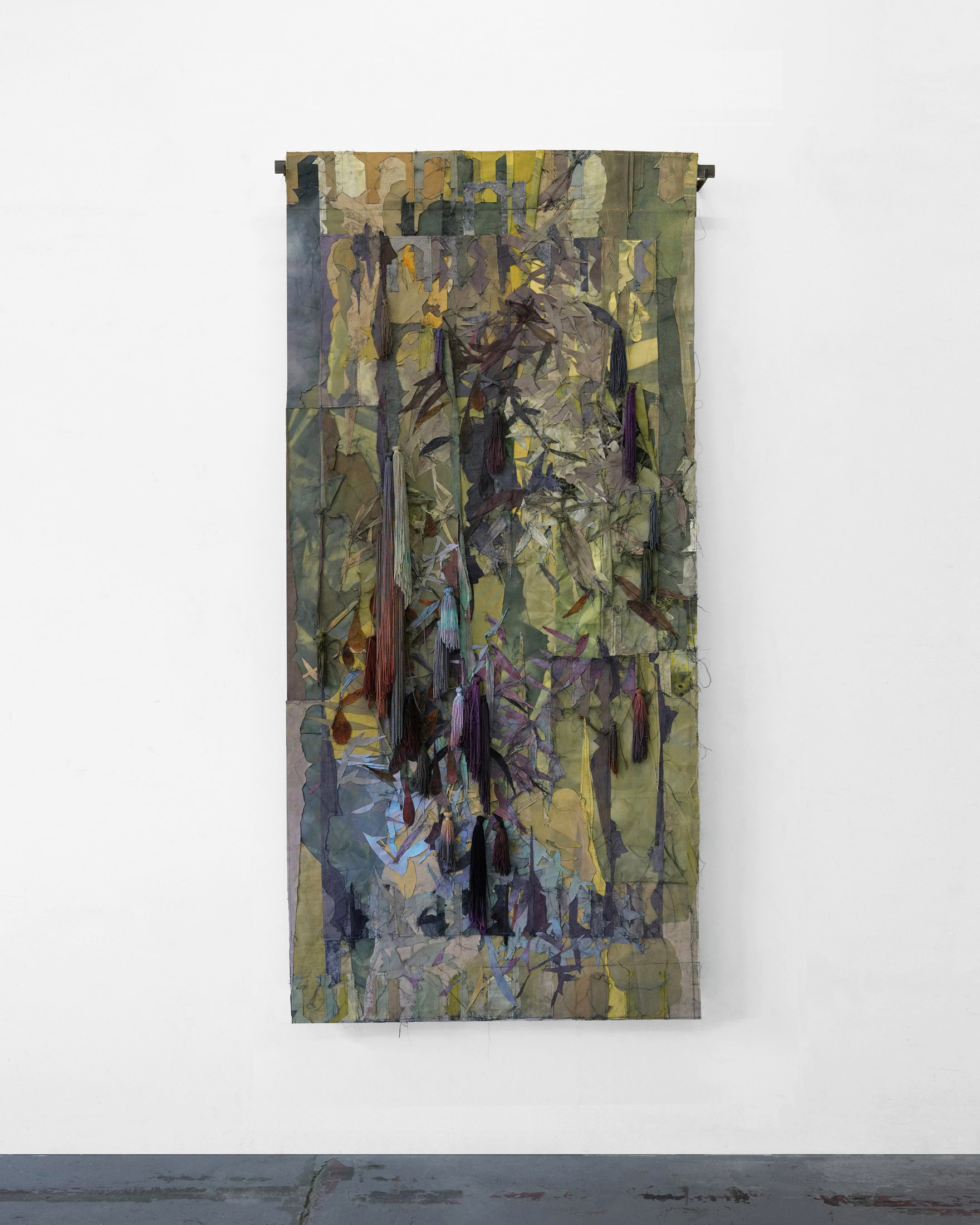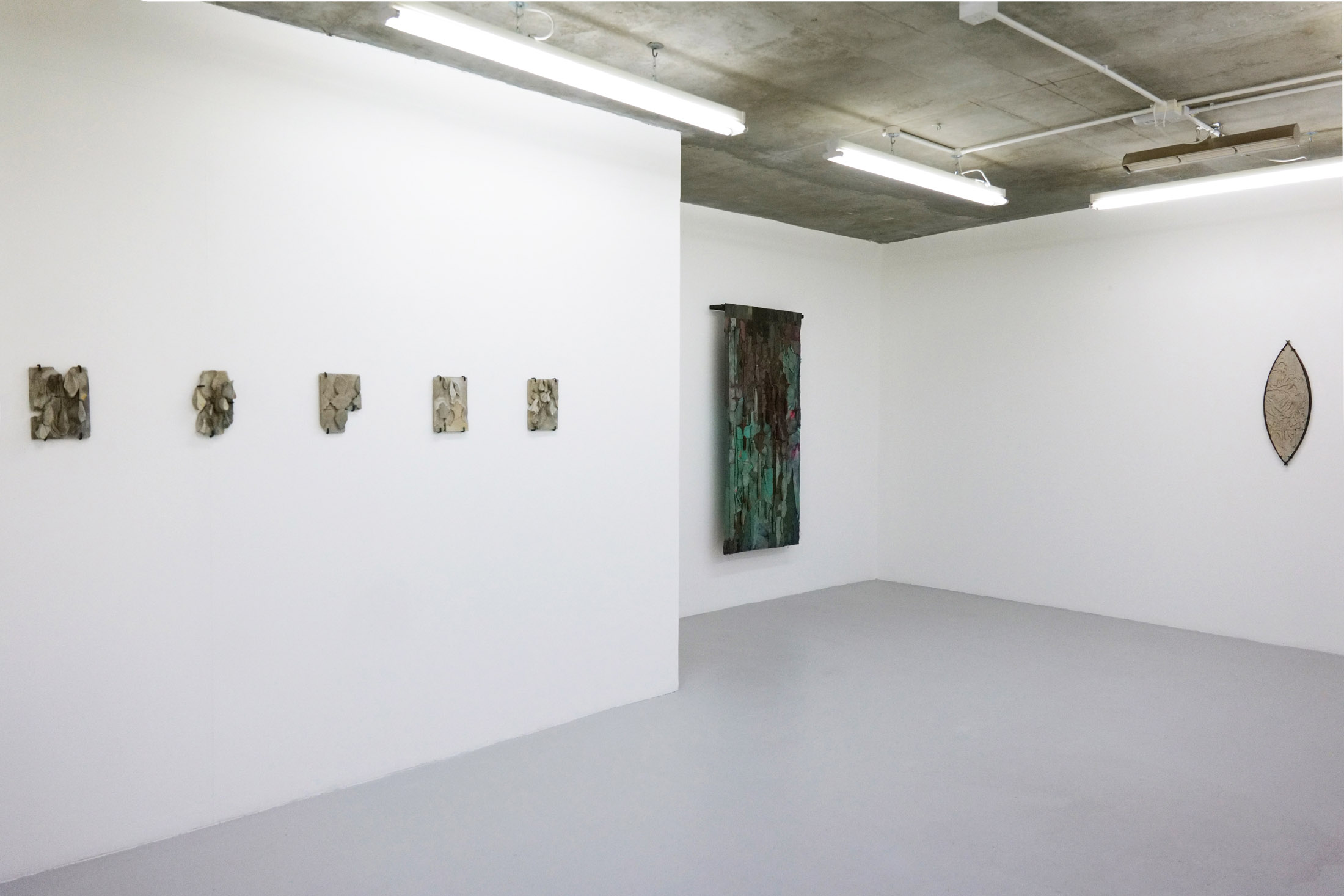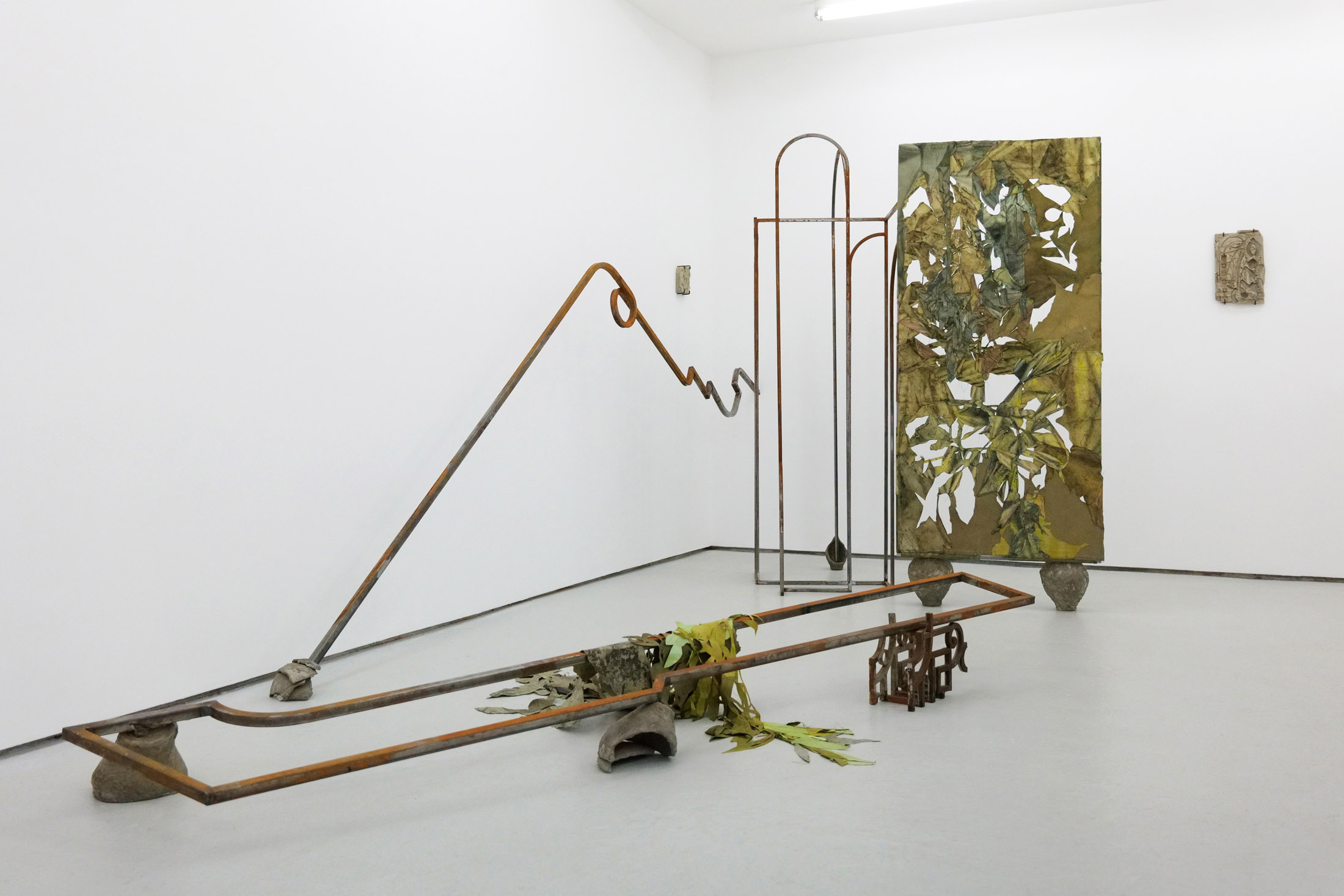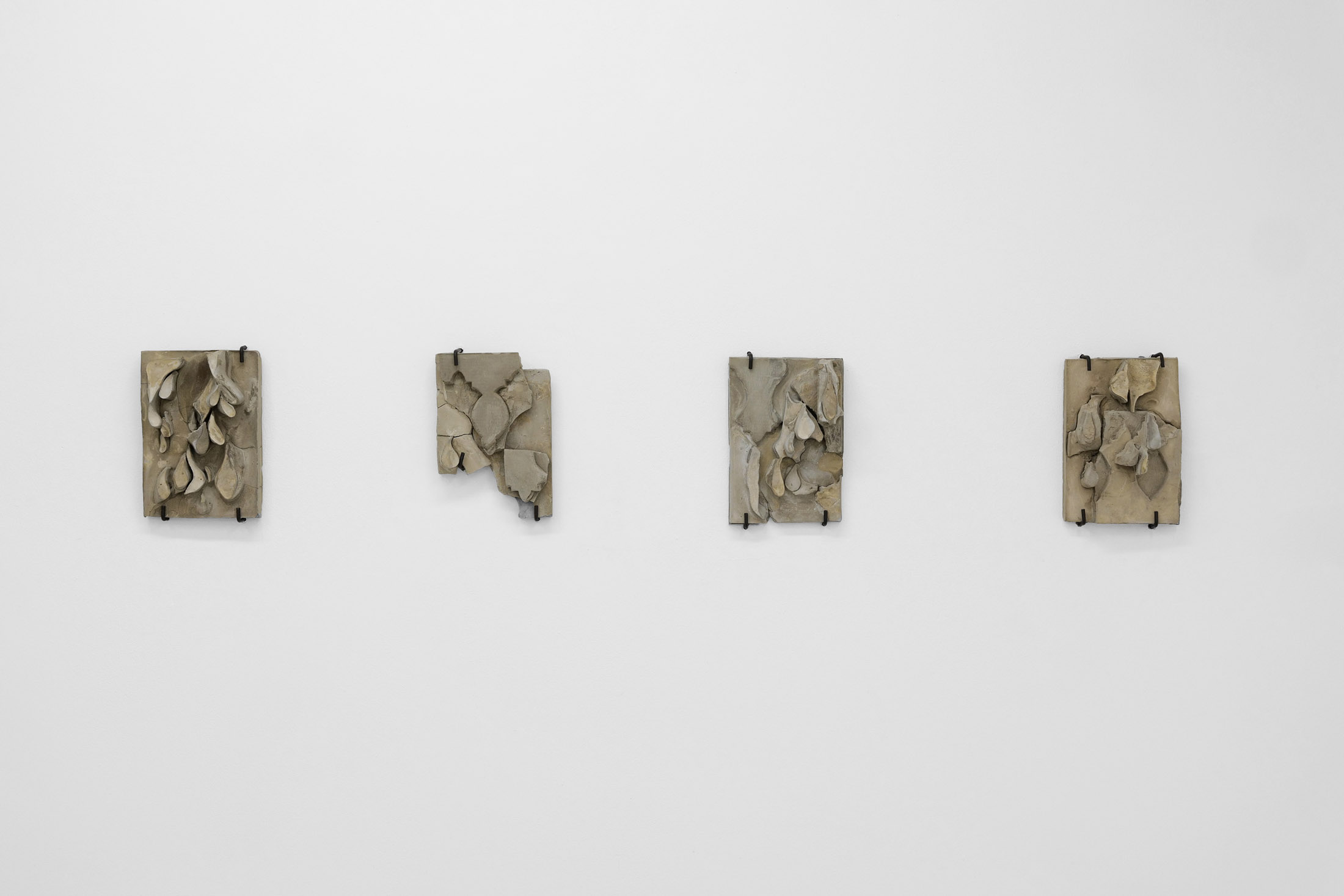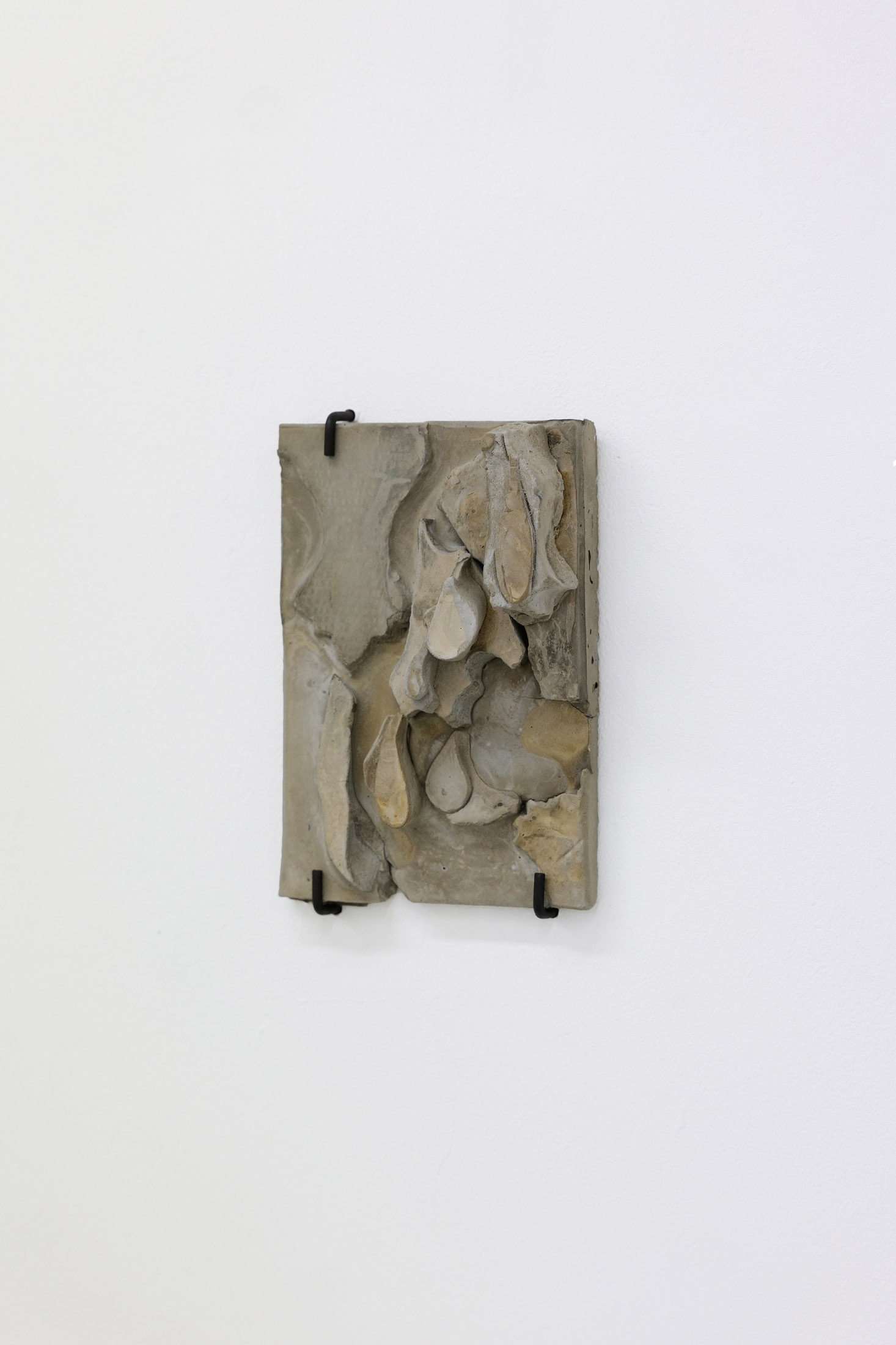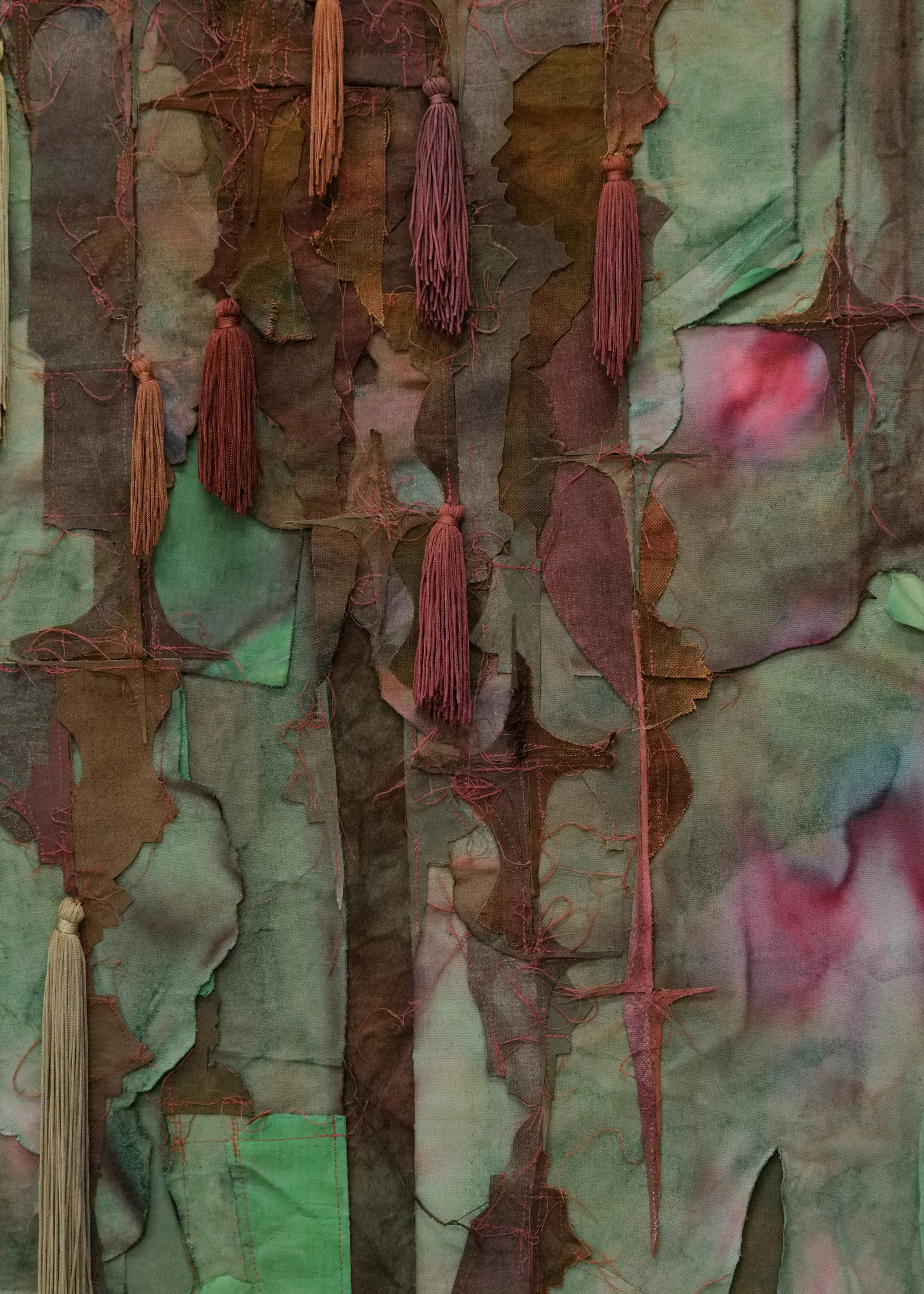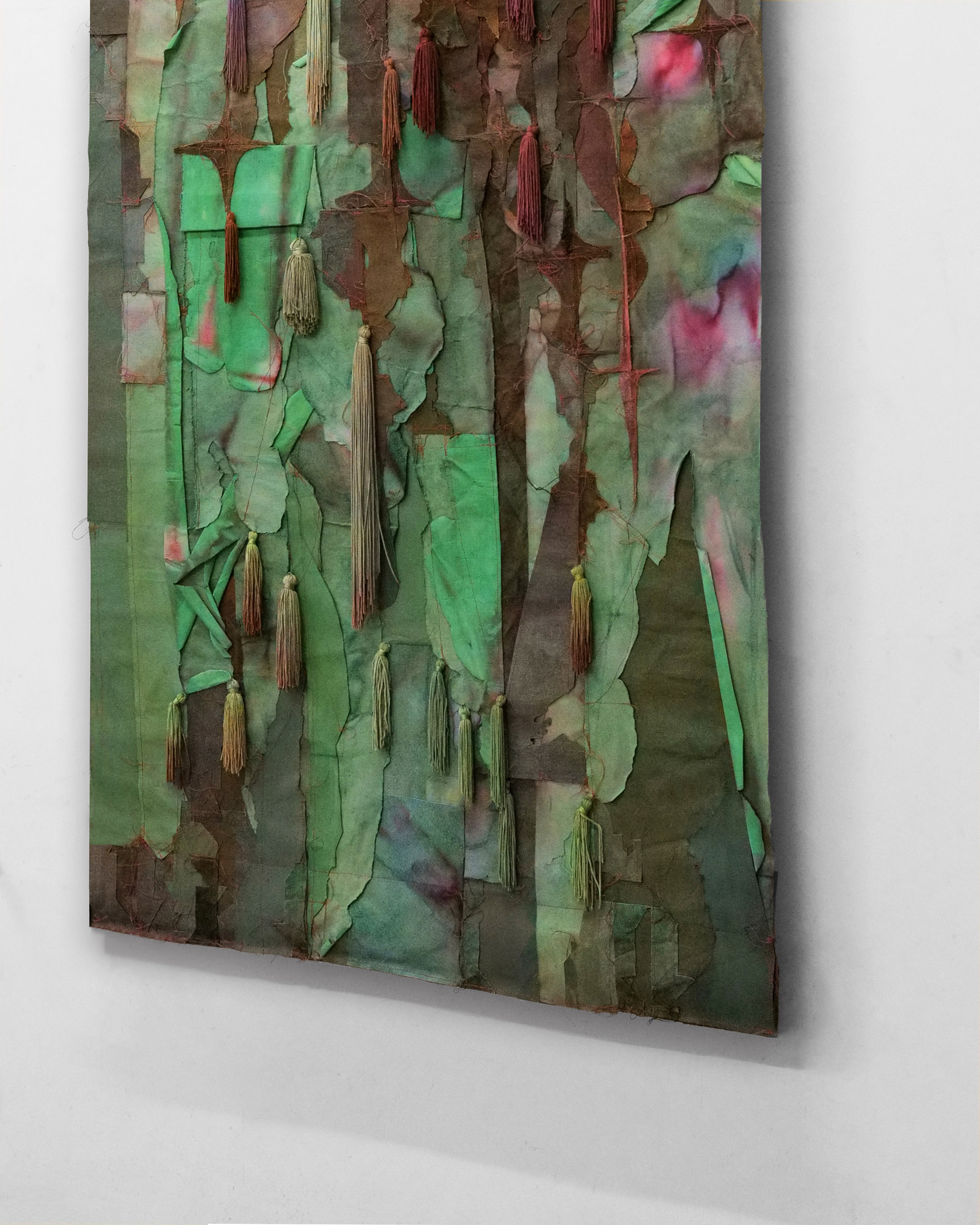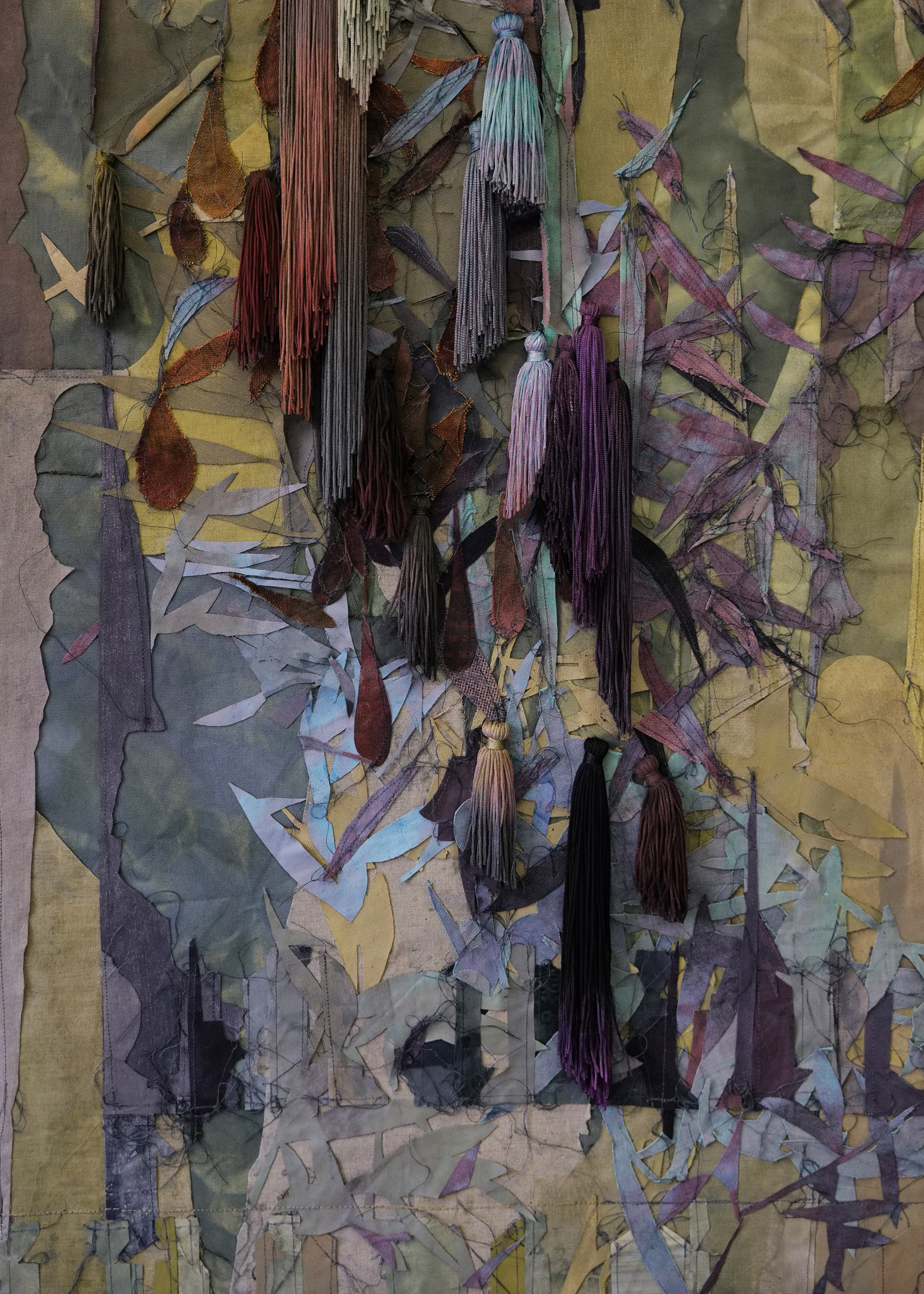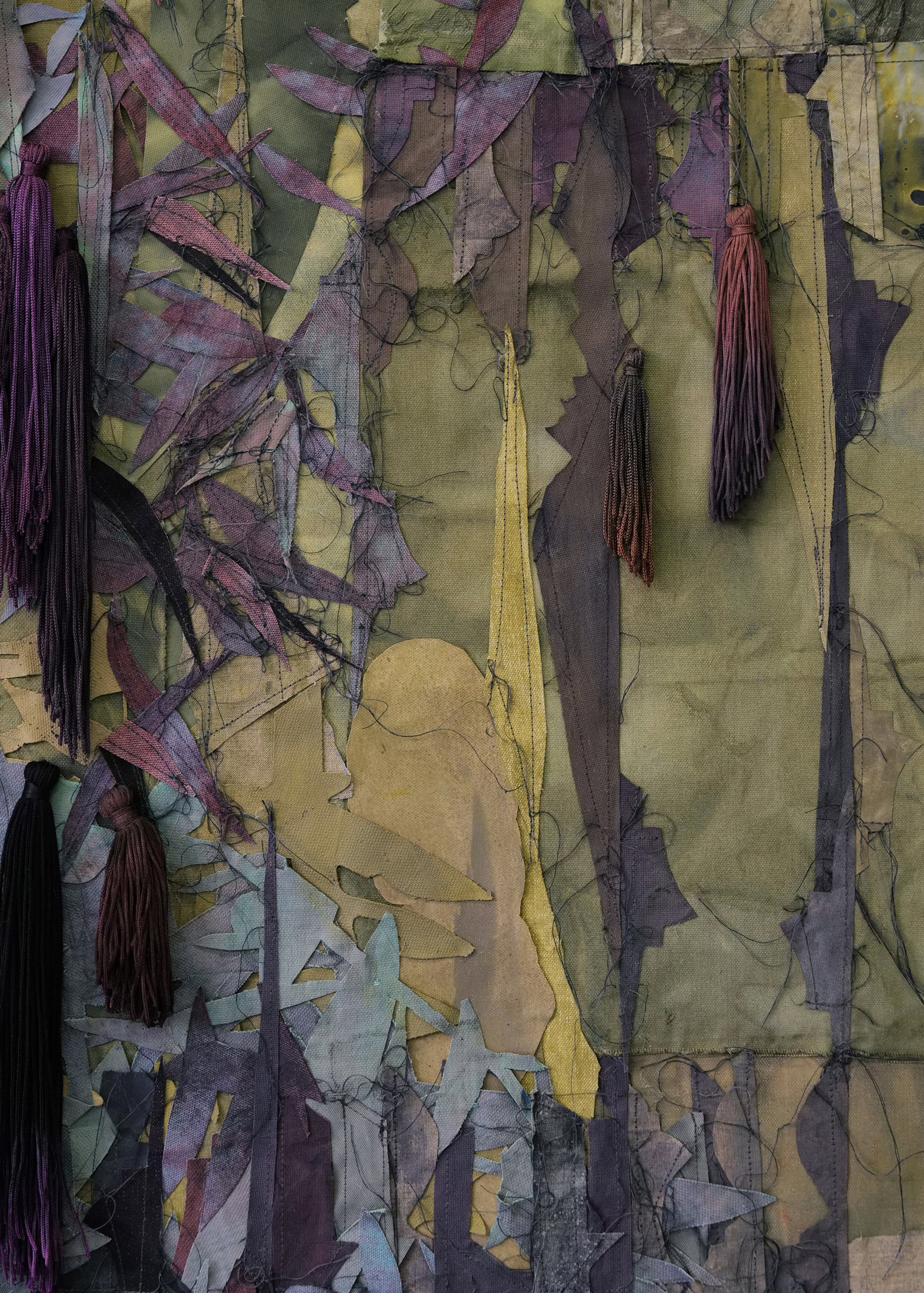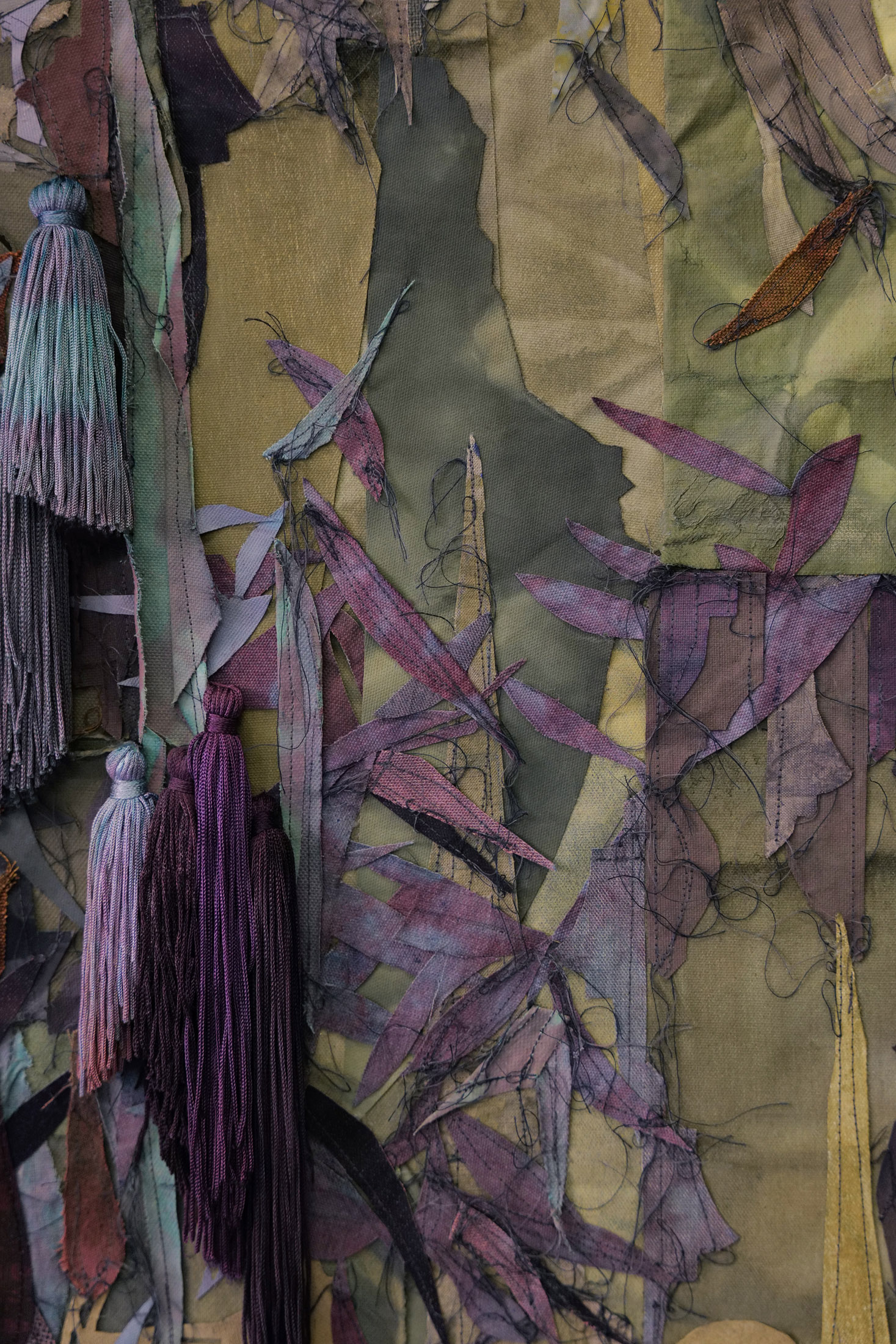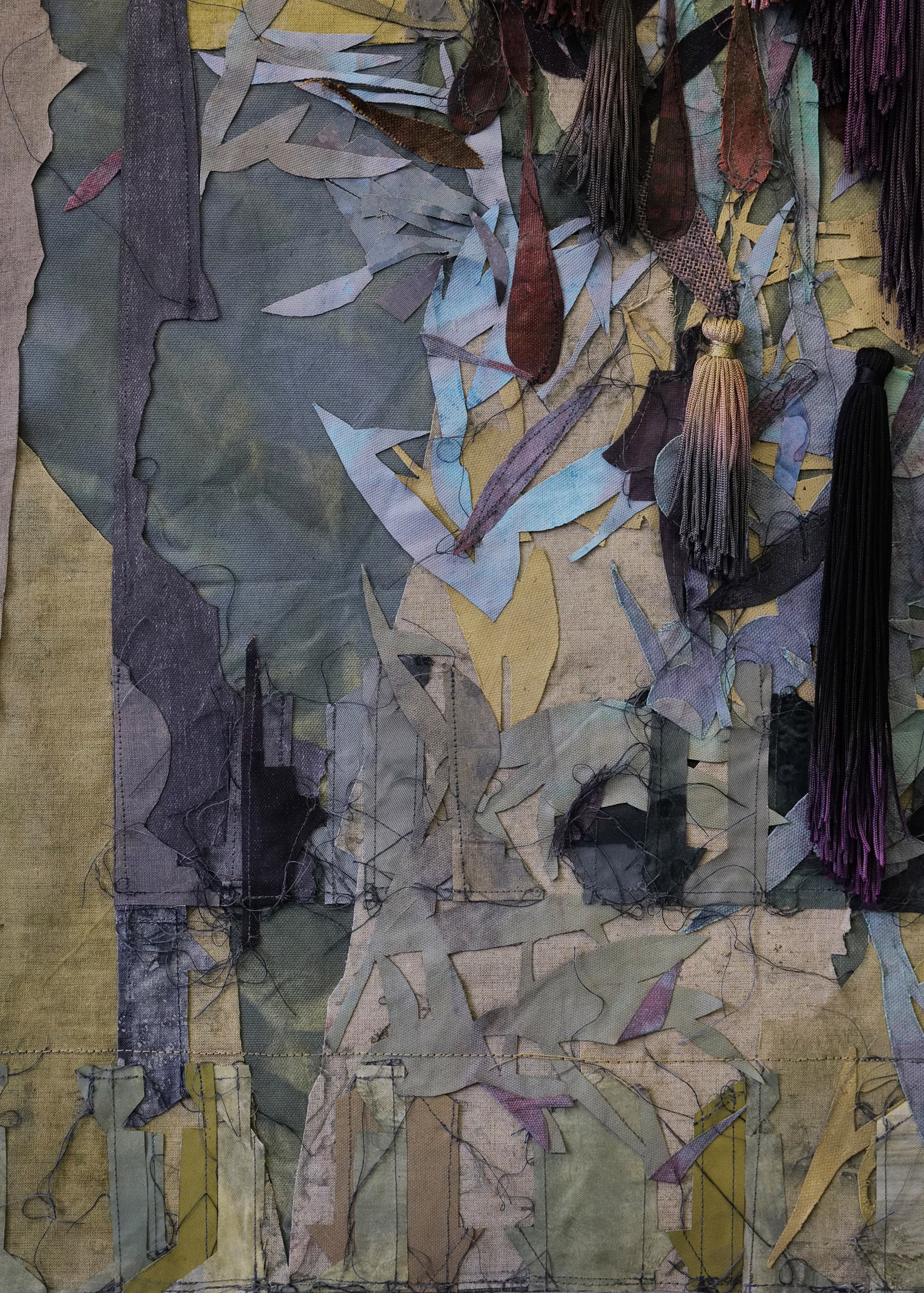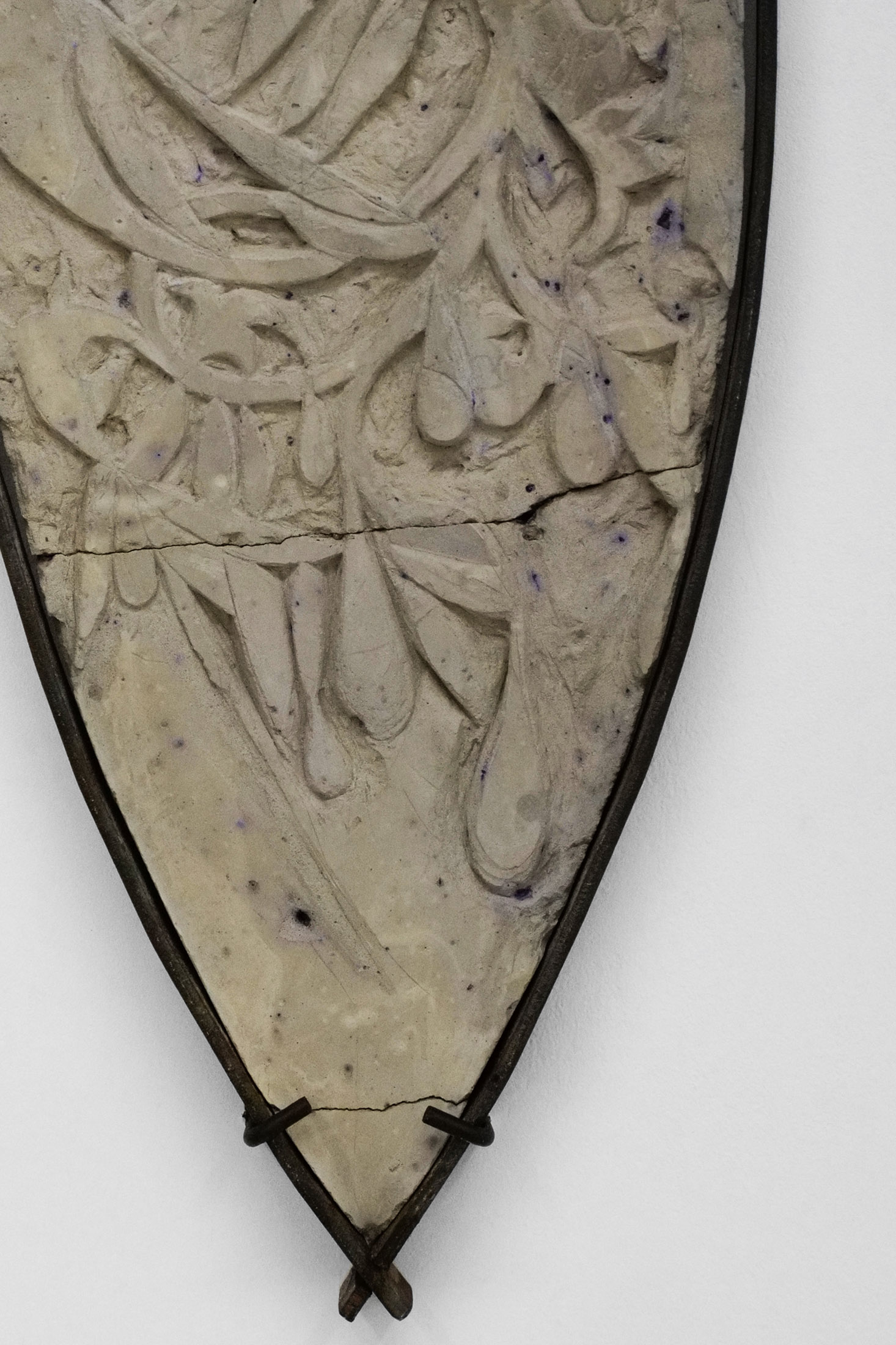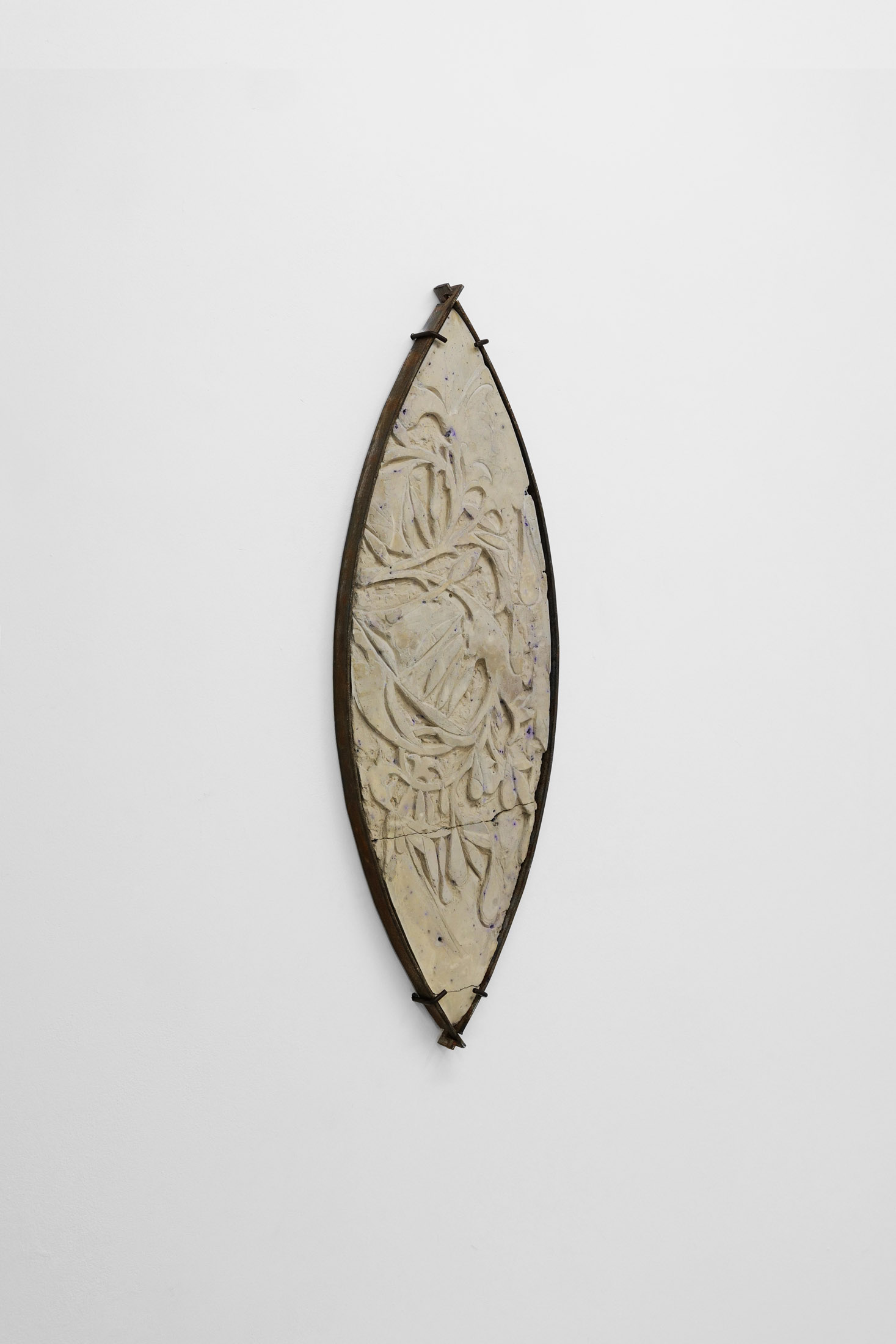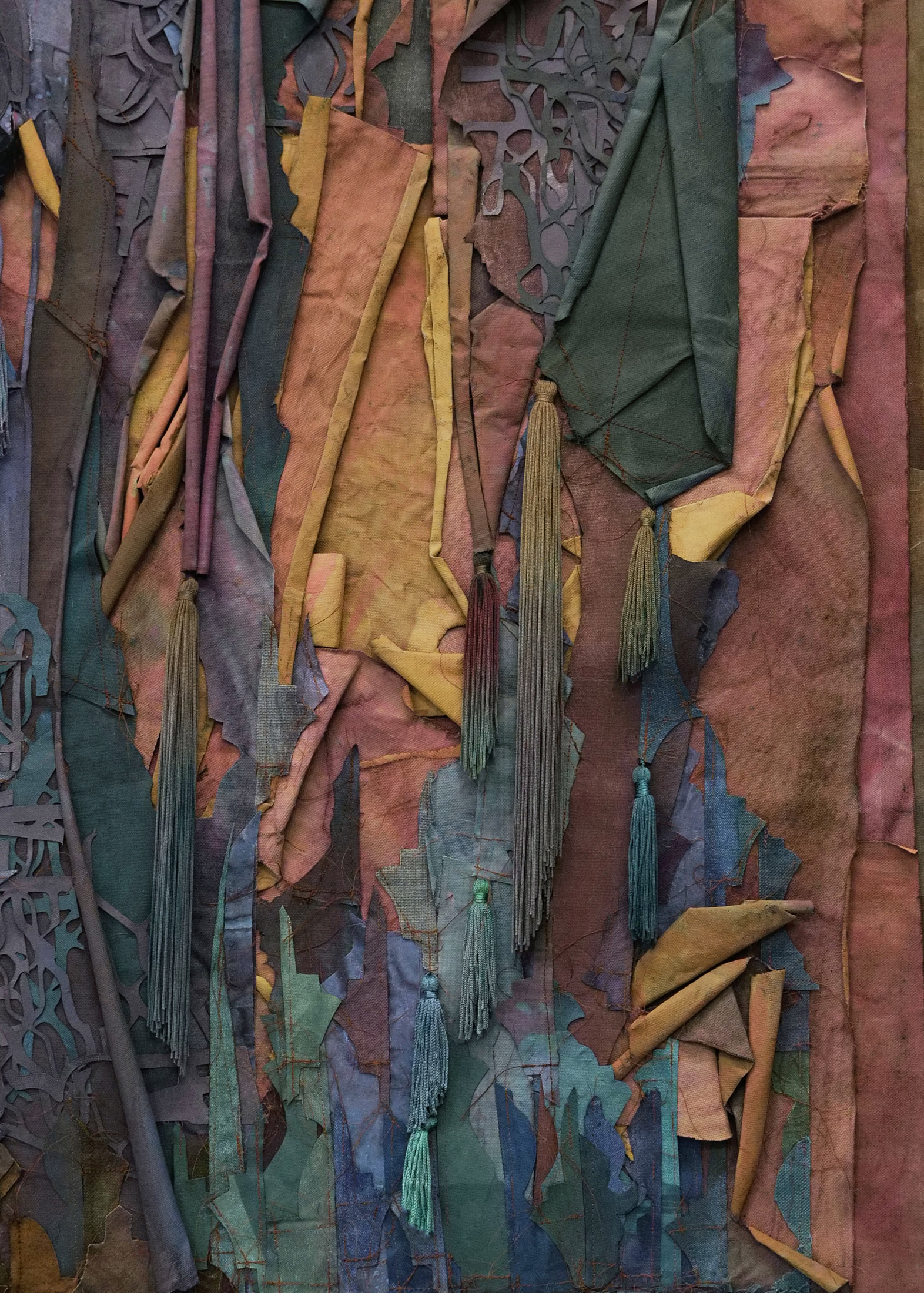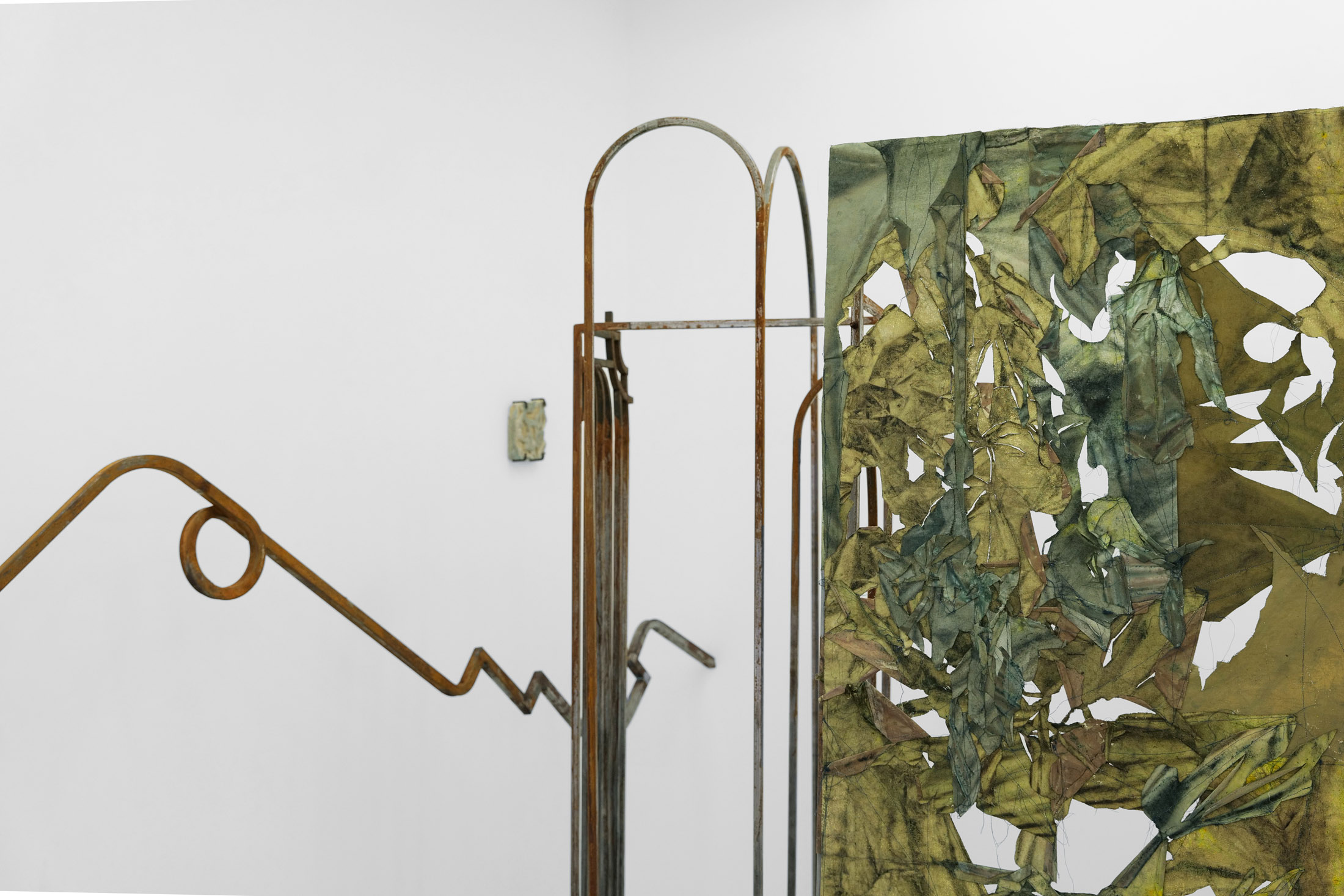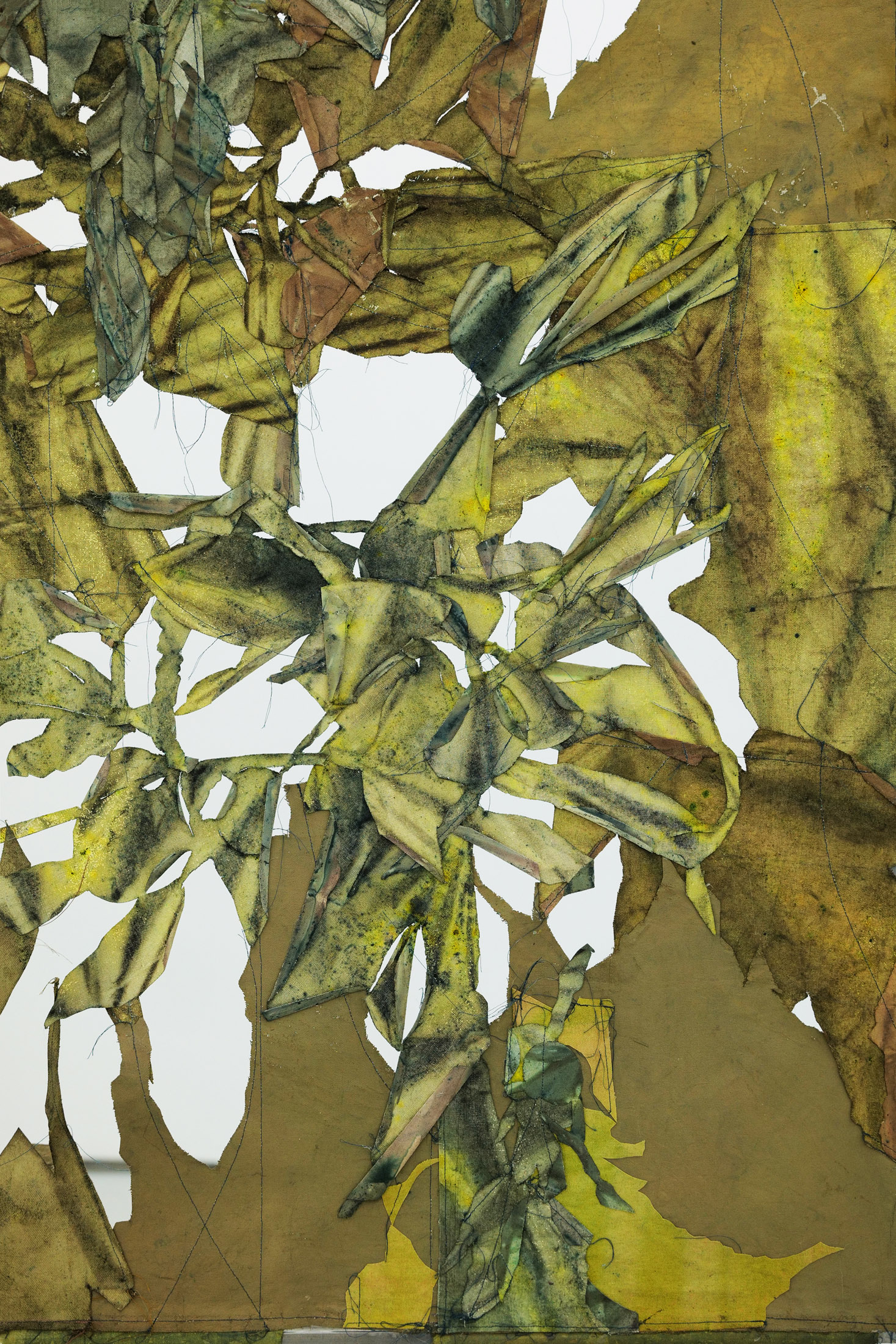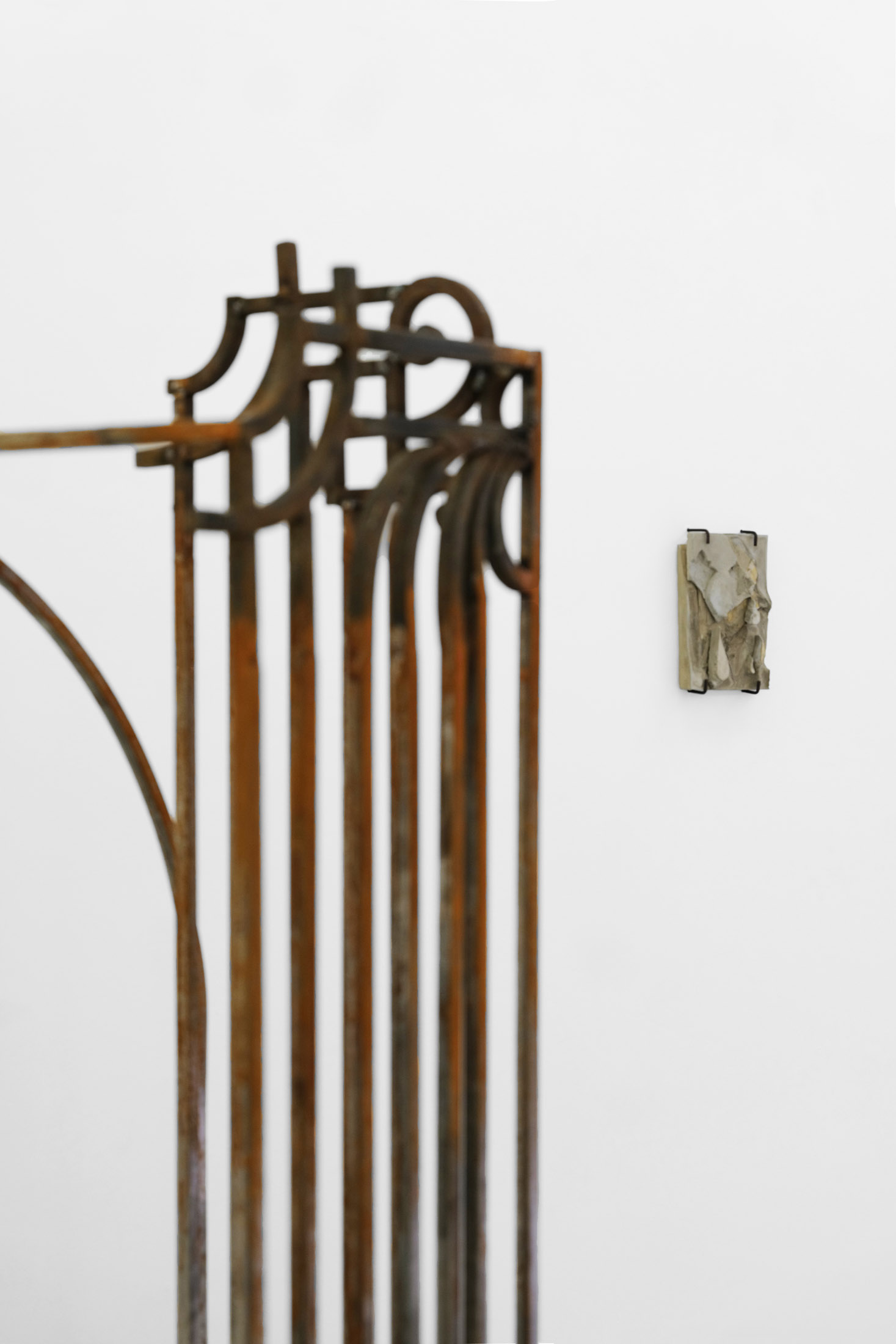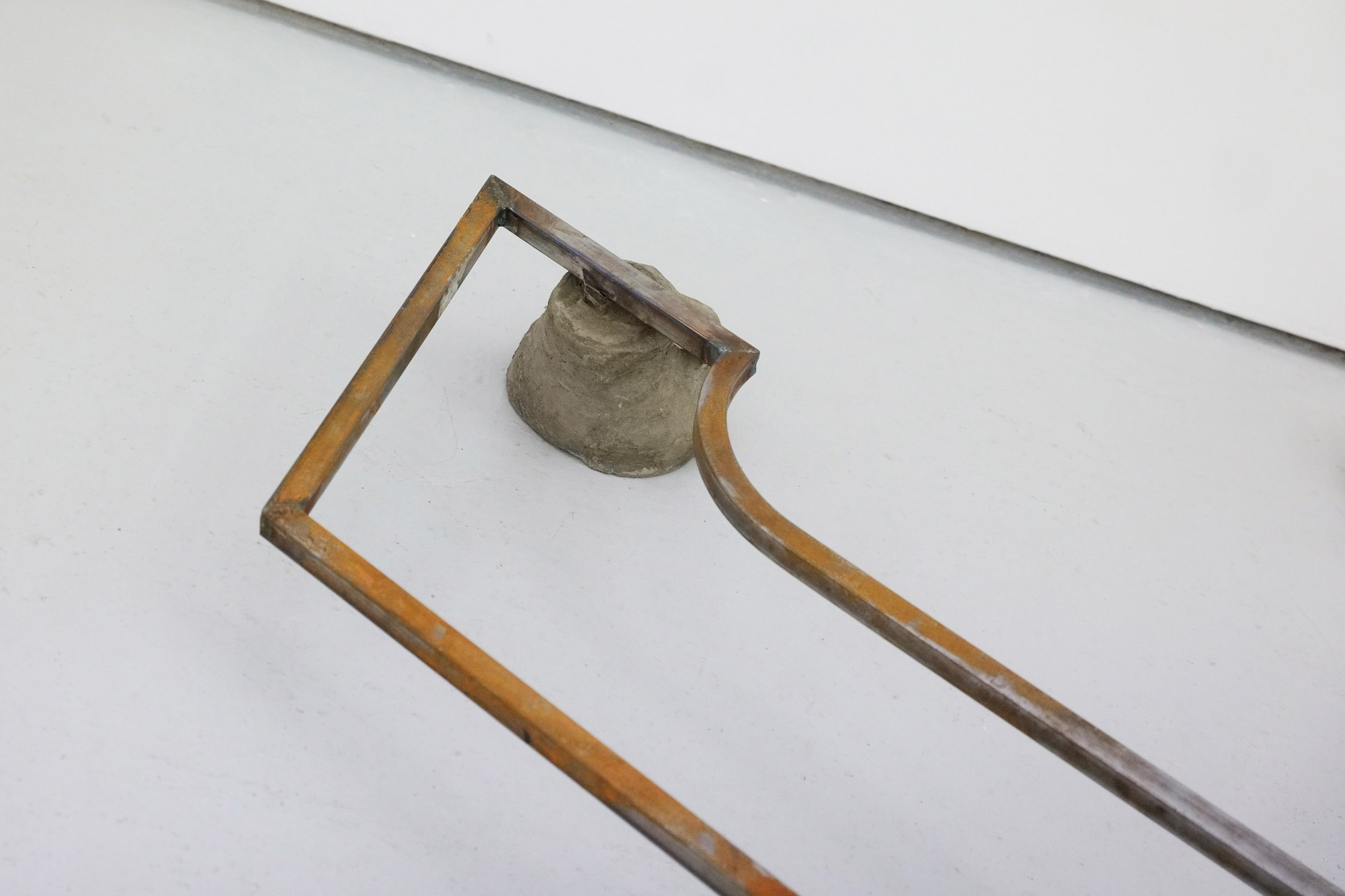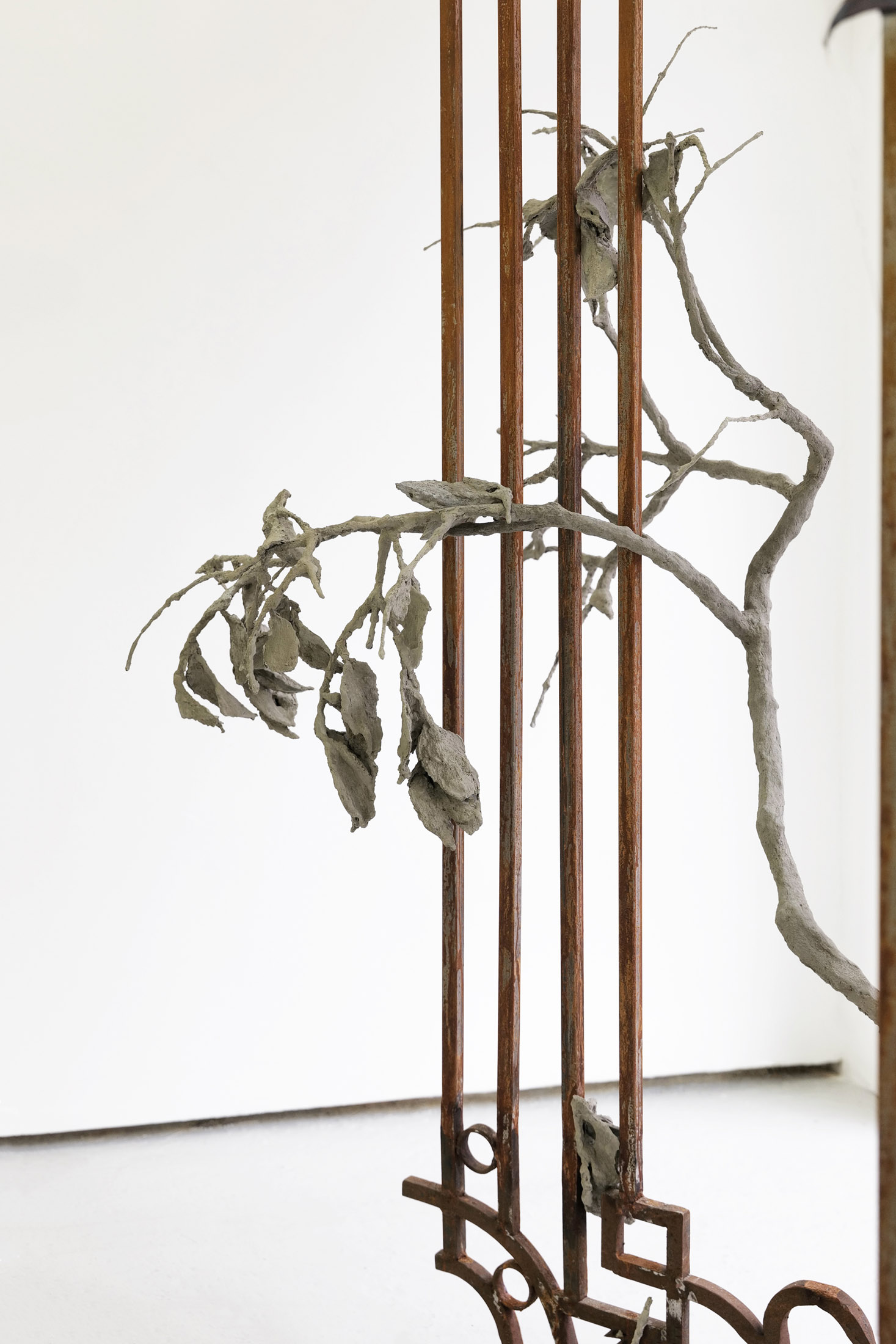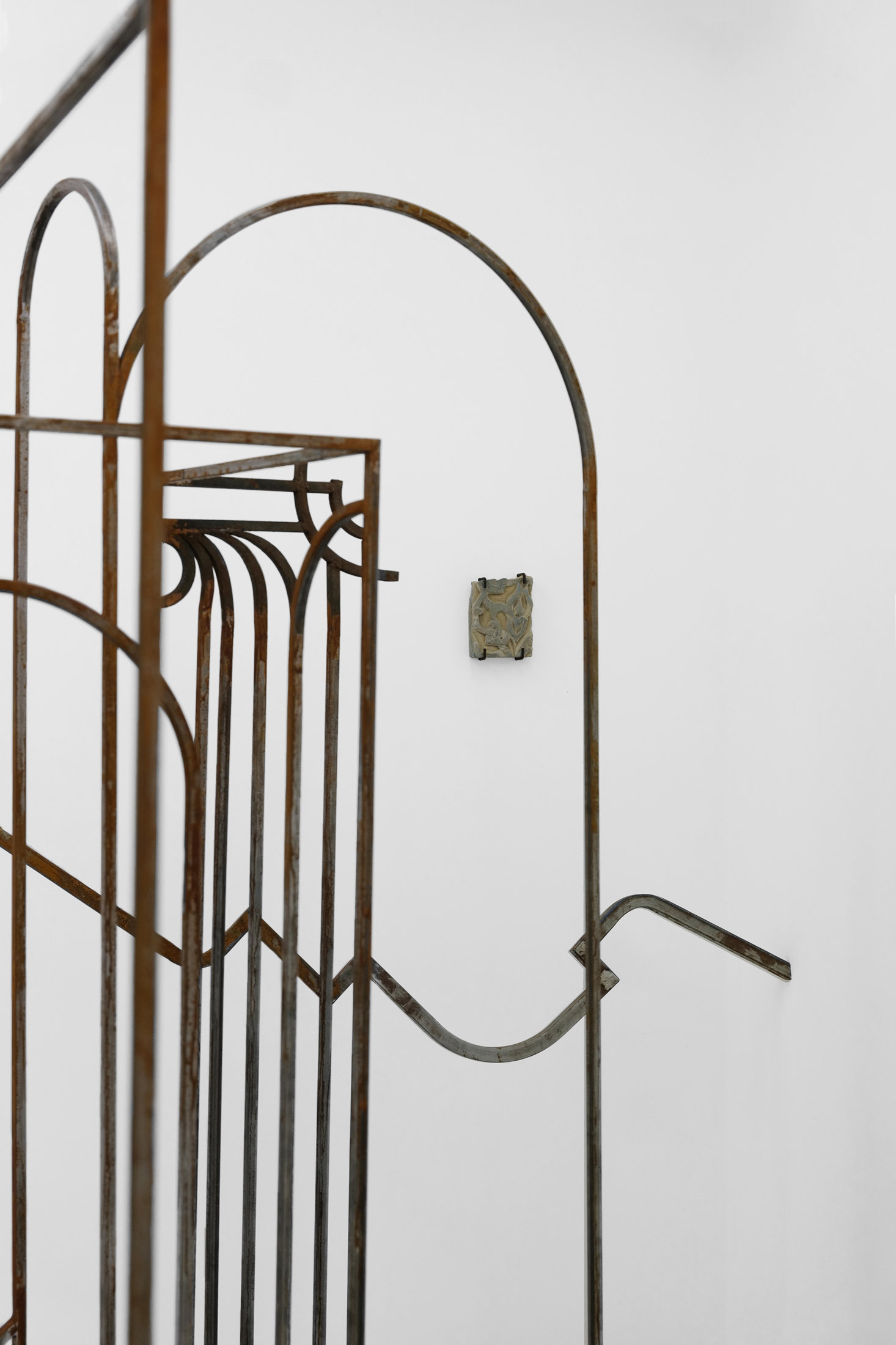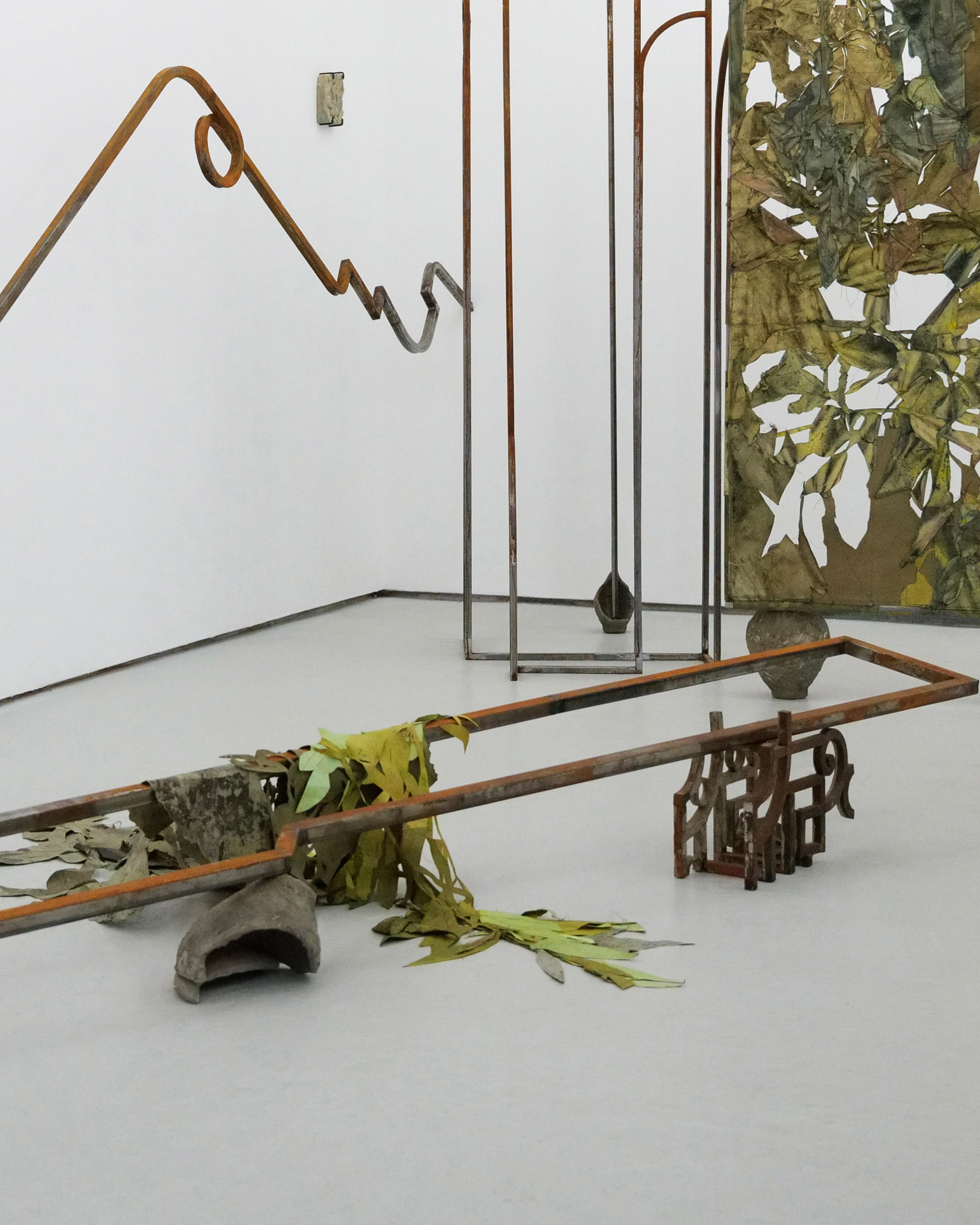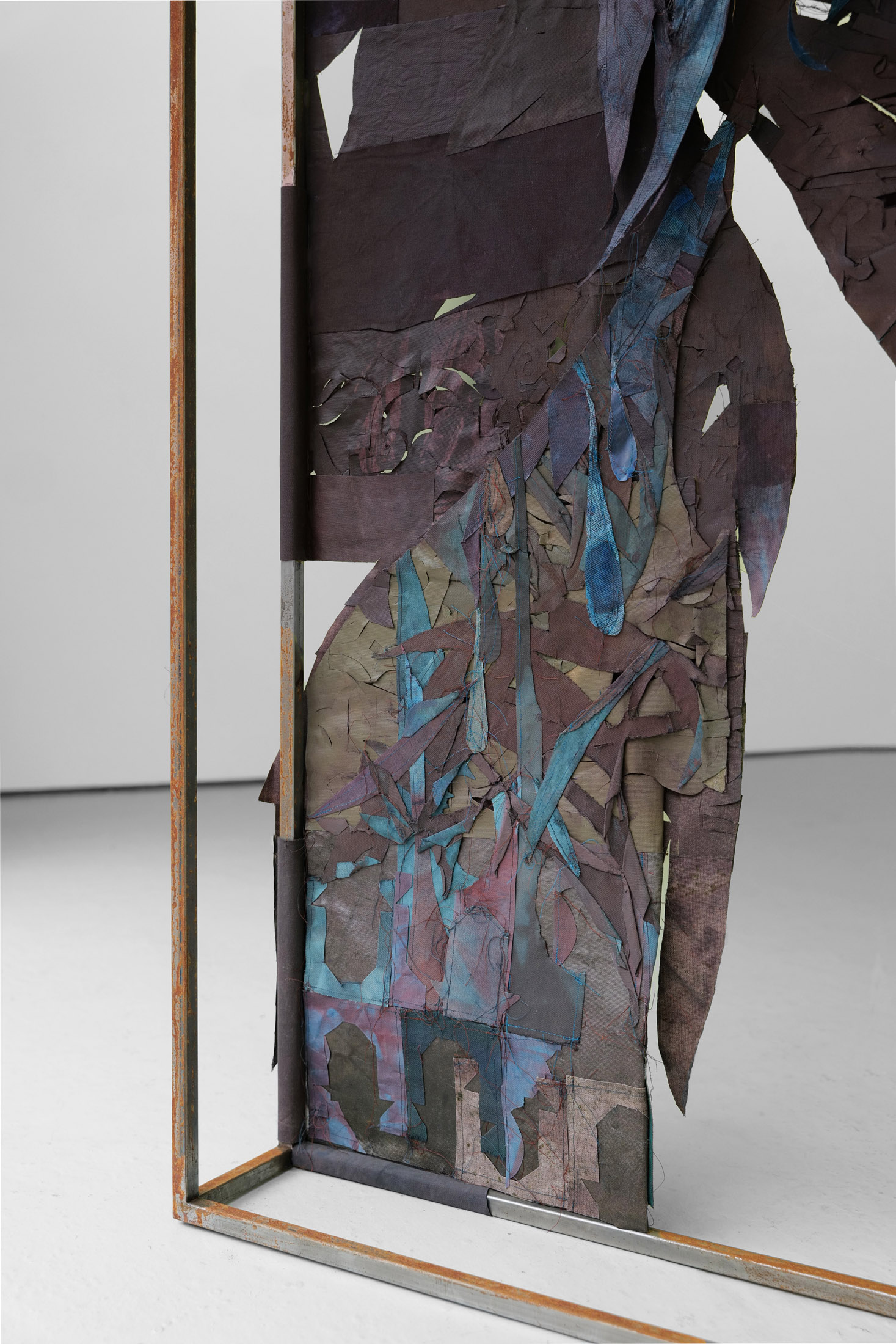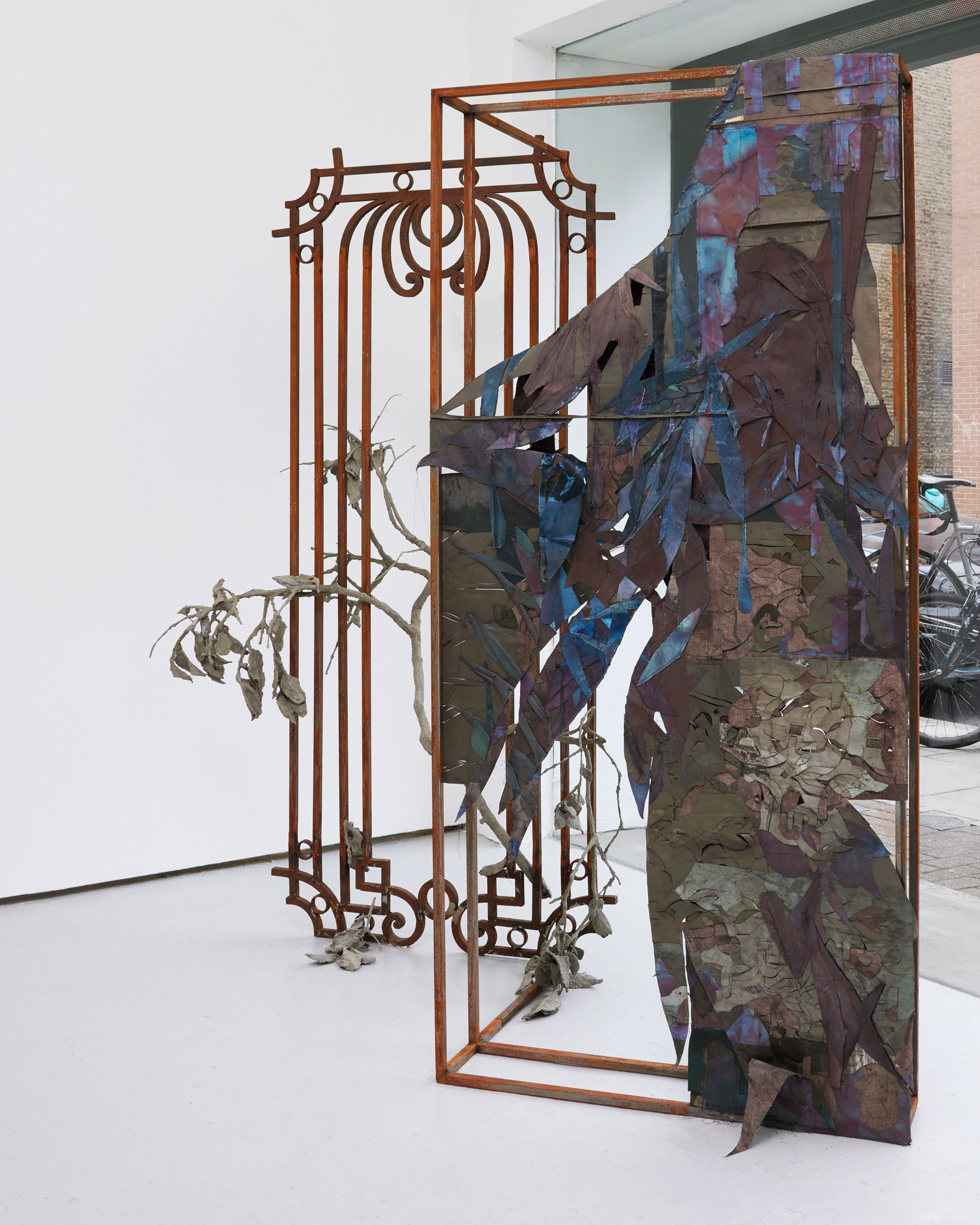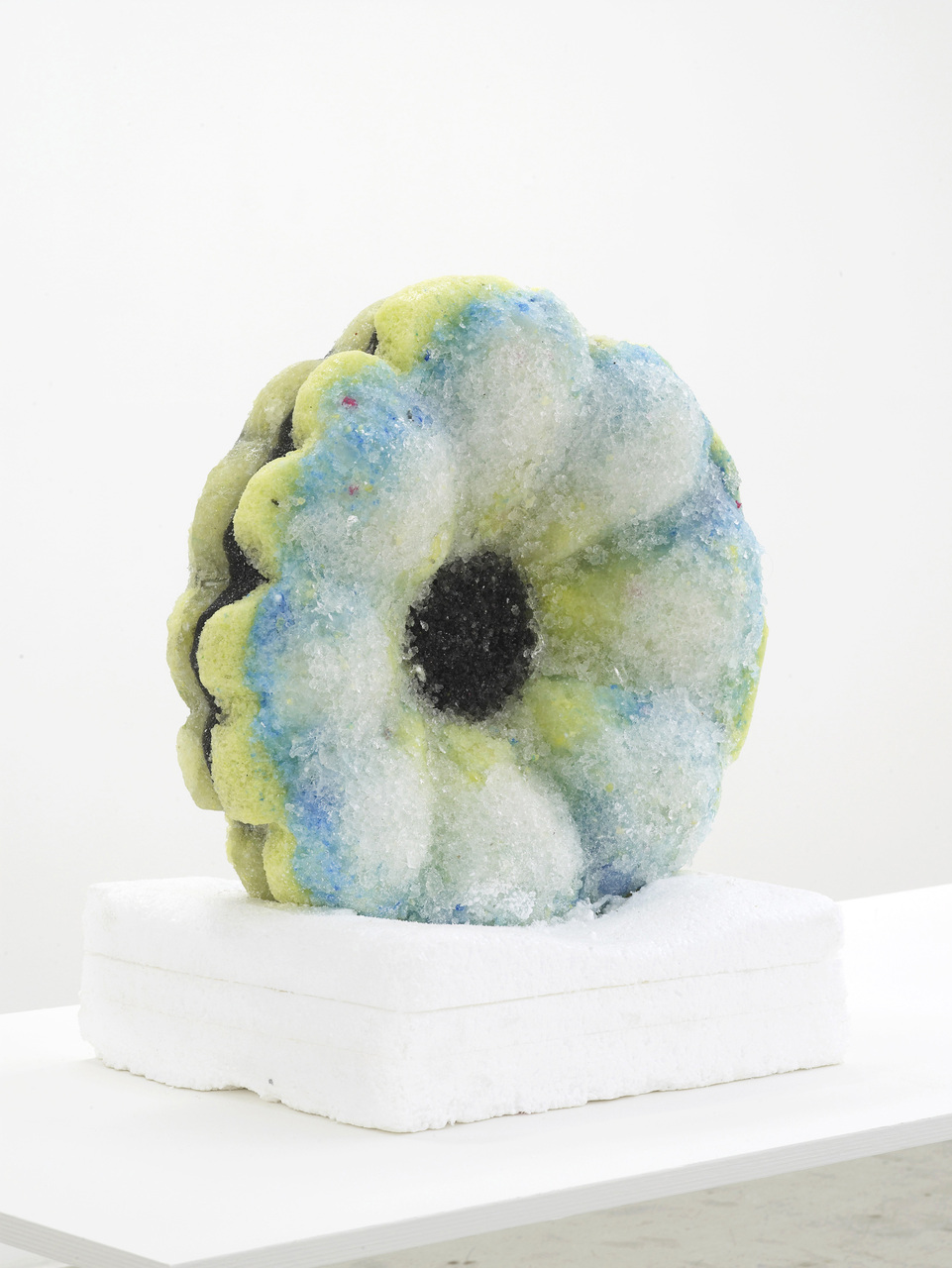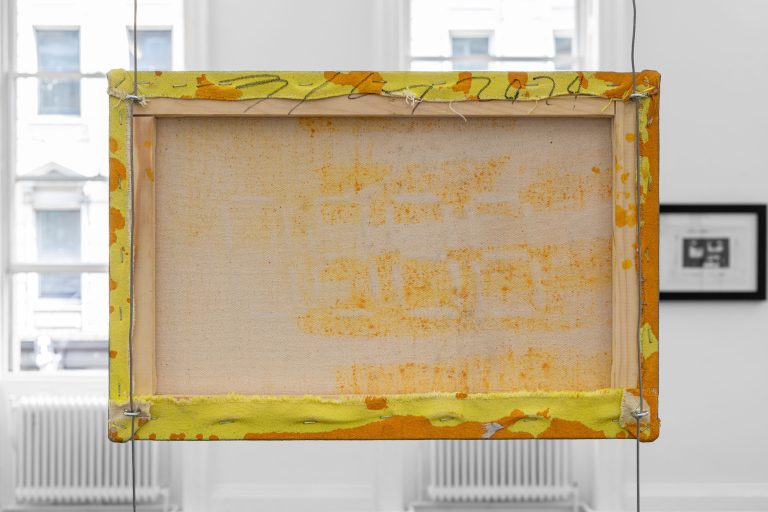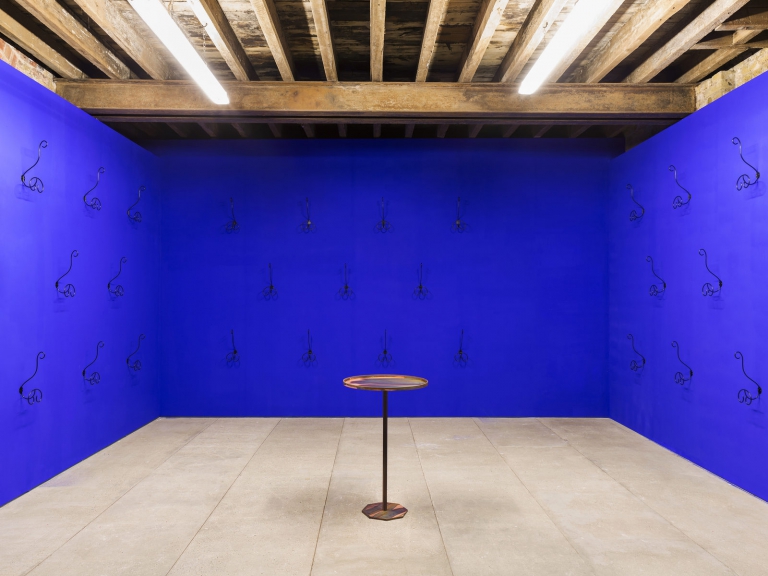Artist: Nour Jaouda
Exhibition title: Where, If Not Faraway, Is My Place?
Venue: Union Pacific, London, UK
Date: May 31 – July 8, 2023
Photography: Ollie Hammick / all images courtesy of the artist and Union Pacific, London
Note: Exhibition’s floor plan is available here
“Cities, like dreams, are made of desires and fears,’ Italo Calvino wrote in Invisible Cities. Streets are lined with the secret lives that play out inside the home, revealed in furtive glimpses through windows and doors left ajar, its architecture a patchwork imprint of the people that have passed through these locales. Each view around the next corner unfurls a line drawn from the present into the past, of family history passed through generations and the wending lines of ships that have brought migrants overseas. Nour Jaouda was born between two places and now finds herself with connections to three. Born and raised in Cairo within a Libyan family, she currently lives between London and Cairo, and keeps a studio in each.
Cairo, the place that Jaouda first called home, is a city that is ever-renewing, a hybrid space built upon majestic history and colonial intervention, of a yearning for the past and a drive towards the future. Her relationship to the ancient Egyptian city is shaped by her family’s history of migration and a feeling of existing in-between, a slippery experience of presence and non-presence, and of what exactly it means to belong. The many layers that make up Jaouda’s work are woven from this same palimpsest of time and space, of fabric stitched together from the threads of her own multifaceted identity and split sense of self. Textiles found by the artist at markets in Cairo and London, a mix of raw and primed canvas and pure Egyptian cotton, are stitched together and blended in new shapes. Some textures are loose or rough, while others are tightly bound. Together their topography offers an alternative map of her encounters with the city, localised to their street corners and flashes of her brief interactions with their vendors.
“Colour,” Josef Albers once reflected, “is the most relative medium in art.” Just as there are infinite shades of green when looking up at a tree or out at a foggy mountain in the distance, so are there endless variations to be found in the interaction of colour with cloth. Jaouda dyes her materials in vivid natural pigments that transform each scrap through their saturation into a rainbow array of yellows, pinks, greens and blues that dance and infuse through them, like a drop of ink amidst a vast pool of water. Colour comes alive and is made physical, three-dimensional, pushing outwards into new forms that crease and intensify with time. Neither a painter nor a sculptor, instead hovering somewhere between the two, Jaouda nevertheless has a painter’s sensibility in her attunement to the effect that a bright or muted hue can have upon the shifting of a mood or even the most fleeting of feelings. A soft colour glimpsed on a passer-by can bring back an intense yearning for a loved one, or a memory long forgotten.
In Jaouda’s restless work, the remarkable fluidity of textiles becomes fully apparent. Cloth can be folded inwards, packed and transported, rolled up and bound. It can also be stretched wide, unfurled, fanned out and draped to form a cloak or even a temporary place of rest. A single sheet of cotton can, with a gust of wind, shift momentarily from two to three dimensions. For Jaouda, the tactility of her materials is rooted in this transformative quality, shapeshifting in a tension between sanctuary and fragility, mass-production and personalisation. Cut and sewn, deconstructed and then reconstructed, they give away glimpses of social history and personal reflection that trickle away like a conversation briefly overheard from a cafe terrace, at once unfamiliar and yet profound.
The structure and design of Jaouda’s wall pieces are inspired by the Islamic prayer mat, with the tassels and textiles nodding to the spiritual spaces that are created from the highly specific configuration of materials in the form of divine geometry. Reconfigured and pulled apart, Jaouda suspends these stitched scraps from bent steel, cascading down from the metalwork in a delicate array of shapes that meld the industrial qualities of the steel with the intimate domestic associations of woven fabric. Jaouda’s steel frames are themselves formed from fragments of the past, taken directly from former gates and doors dotted around downtown Cairo, where the faded grandeur of the European-inflected colonial architecture can still be seen in increasing disrepair. Removed and remade by Jaouda in patterns that echo their origins, the old is inherently embedded in the new. Each piece hints at the streets that these curved steel gates once flanked, their doorways the division between exterior and interior, simultaneously forbidding and welcoming, a portal between two states of being.
While walking down the street, I have occasionally encountered a foot or handprint frozen in the cement of the pavement, or even a playful graffitied drawing hastily scratched with a twig. I once saw the paw print of a cat fossilised in the grey concrete on an overcast London afternoon, a permanent record of a momentary strut across the surface as the cement was still setting, like a shadow that refuses to disappear with the shifting sunlight. How long ago, I wondered, had that cat walked across this path? Under Jaouda’s direction, cement becomes a surface for excavation, somewhere between sculpture and drawing, as she carves rapidly into its still liquid face before it hardens. Where the stitching of textiles requires a slowness that defies the natural rhythms of intuition, sketching in cement invites rapid decisionmaking and mark-making that is part-deliberate, part-unconscious in its many twists and turns. Is that a fig tree in the monotone of the concrete? Representation melts away into abstraction, colour into hard stone.
There is a constant sensation when encountering Jaouda’s installations of a work in progress, of the unravelling (or rebuilding) or a project that is just midway through and still active. Their unfinished qualities – provisional, full of possibility, with the artist’s hand still present – are the key to their seductive allure. After all, what separates an artist’s studio from the gallery? The heavy frames encircling the hung canvases and the lick of white paint upon the walls? Jaouda brings her process, at once repetitive and ritualistic, into the gallery, where each work is an invitation to trace its history back not just to its inception in the studio but even further into the past. Broken apart and fragmented, Jaouda invites us to participate in putting the pieces back together again. We peer through the doorway and hover on the threshold, before taking the first step inside.
-TEXT BY LOUISE BENSON

